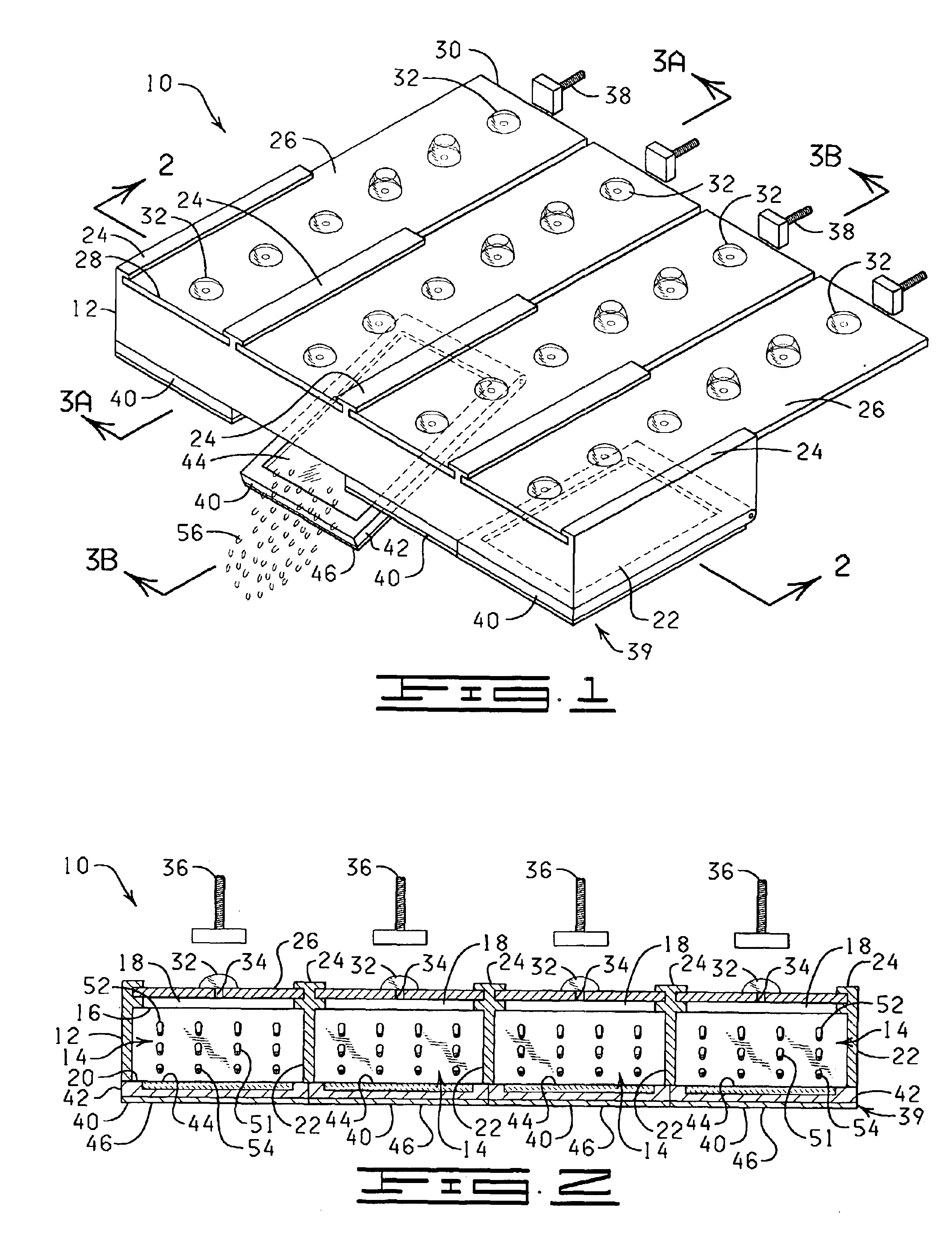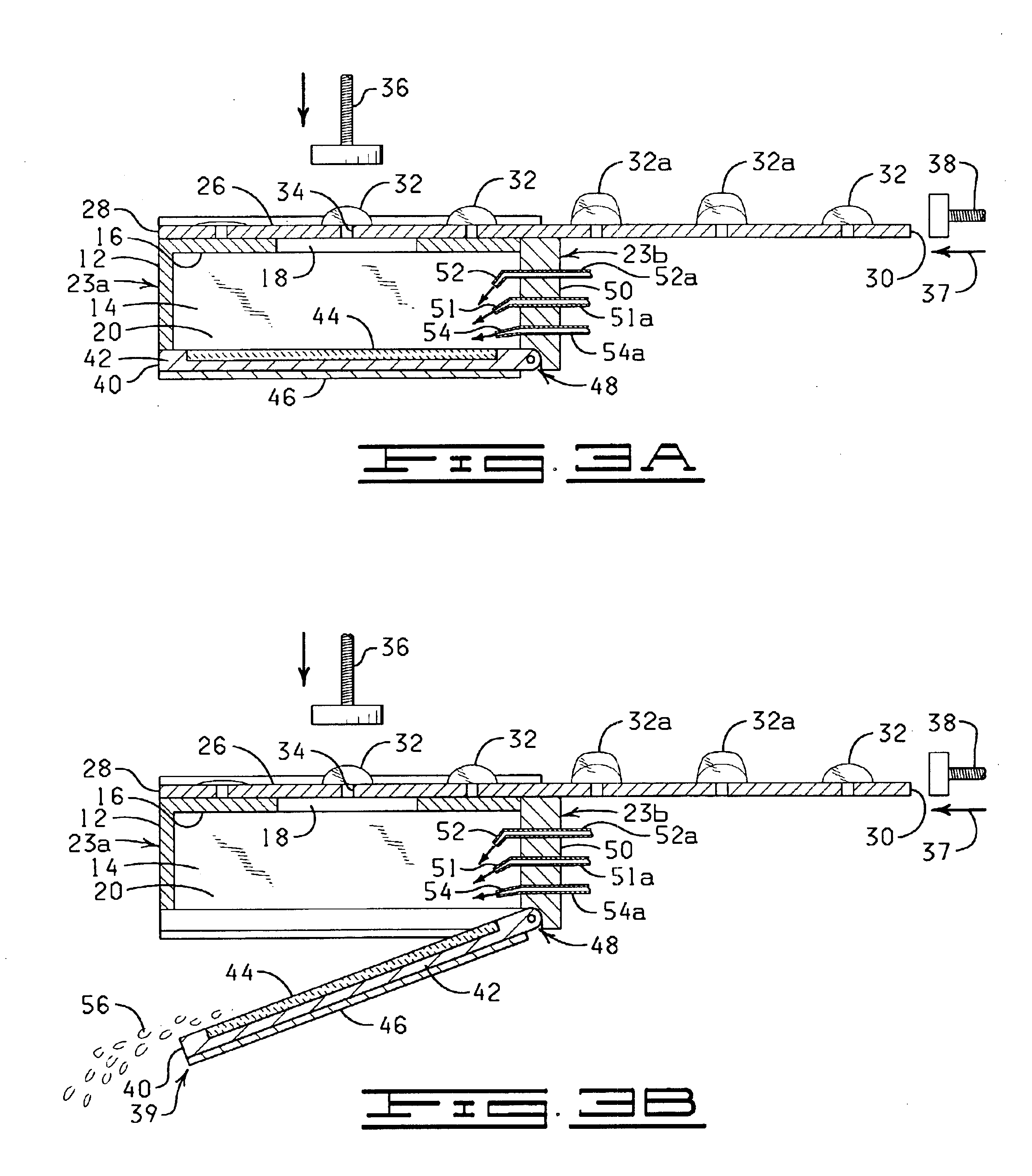In situ heat induced antigen recovery and staining apparatus and method
a heat-induced antigen and staining technology, applied in the field of samples, can solve the problems of high cumbersome and inefficient separation apparatus, no currently available automated or semi-automated staining instruments specifically teach
- Summary
- Abstract
- Description
- Claims
- Application Information
AI Technical Summary
Benefits of technology
Problems solved by technology
Method used
Image
Examples
Embodiment Construction
The present invention is directed to an automated method and apparatus for treating biological samples on microscope slides for unmasking (“retrieving” or “recovering”) epitopes or antigens of the biological samples and then staining or otherwise treating the biological samples. The automated apparatus comprises an array of individual reaction compartments, each of which is used to treat a single microscope slide (also referred to herein as a “slide”), wherein each reaction compartment preferably can function and can be controlled independently of the other reaction compartments in the array. Each reaction compartment in the array comprises a support element comprising a surface upon which a microscope slide can be supported and positioned adjacent or inserted into the compartment for treatment with a reagent. The support element further comprises, in a preferred embodiment, a conduction type heating element for heating the microscope slide to a predetermined treatment temperature w...
PUM
 Login to View More
Login to View More Abstract
Description
Claims
Application Information
 Login to View More
Login to View More - R&D
- Intellectual Property
- Life Sciences
- Materials
- Tech Scout
- Unparalleled Data Quality
- Higher Quality Content
- 60% Fewer Hallucinations
Browse by: Latest US Patents, China's latest patents, Technical Efficacy Thesaurus, Application Domain, Technology Topic, Popular Technical Reports.
© 2025 PatSnap. All rights reserved.Legal|Privacy policy|Modern Slavery Act Transparency Statement|Sitemap|About US| Contact US: help@patsnap.com



